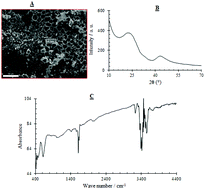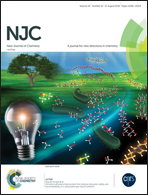Date stone based activated carbon/graphite electrode for catechol analysis: physico-chemical properties and application in beverage samples
Abstract
The purpose of this paper is the modification of a carbon paste electrode (CPE) with activated carbon synthesized from date stones using a pyrolysis system followed by physical activation. This material has the advantage of very low cost and facilitates charge transfer. The modified electrode was used for electrocatalysis and determination of catechol. A series of analyses and tests were carried out to demonstrate the nature, the surface functional groups and even the porosity of the resulting product. The activated carbon exhibited remarkable electrocatalytic activity toward catechol oxidation. The electron transfer coefficient, surface coverage and number of electrons for catechol oxidation at the surface of the AC-CPE were determined using electrochemical approaches. Subsequently, a sensitive and convenient electrochemical method was proposed for catechol analysis. The linear range is between 1.0 × 10−6 and 1.0 × 10−3 mol L−1 with a correlation coefficient of 0.993. The limit of detection is as low as 4.8 × 10−8 mol L−1. Finally, this novel method was employed to determine the catechol in tap water, green, black and peach teas, and in coffee samples.



 Please wait while we load your content...
Please wait while we load your content...